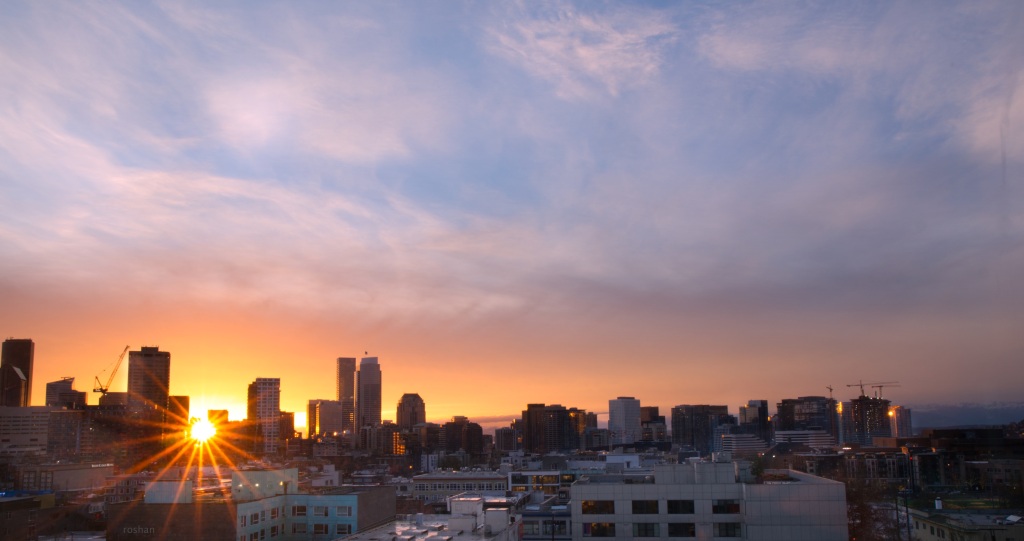Sunset?
This may seem like its a post and picture not related to space, but the sun is, in fact, in space. And when it sets, its really just the Earth rotating away from it as the Earth orbits around the sun. So clearly, this post is also about space, and the sanctity of this blog’s sub-headline has been preserved.
Branching out
The sunsets in Seattle blew my mind when I first saw them. The dazzling colors combined with the dramatic clouds and the glittering skyline make for an incredible sight. I’ve been attempting to capture some of the more dramatic sunsets around here for a while, and I think I finally have one worth sharing.
Sunsets are clearly pretty different from night sky milky way shots. Both the capture and the processing steps involved a lot of re-experimenting on my part. For sunsets, I have been trying a smaller aperture and slightly longer exposure, since I find that captures the colors and clouds better. This is very different from the milky way photos, where I needed maximum aperture to capture as much light and as many stars as possible. There is also a much smaller time window when capturing a good sunset. I have noticed that there is about a 10 minute window where a sunset looks perfect, versus an hour or more for the milky way (depending on moon rise time).

This shot started with a 1/5 second exposure and f/16 aperture. I used the same 16mm lens I use for the milky way photos; I think it actually works pretty well for sunsets and cityscapes. I mentioned the limited time window for shooting sunsets above – and its pretty evident by the sun rays I managed to grab in this picture (they disappeared in just a couple of minutes). I got lucky here, the sun was setting right between a few buildings downtown, and the rays made the quintessential sun ray shape as they hit the lens. I’ve tried to capture something like this many times over the last couple of years, and I’m glad I finally got the timing right (I’m no pro – there are a million photos out there with far better timing).
I did something new with my raw editing this time around – an overlay in Affinity. This basically let me increase the exposure on a subset of the image (in this case the buildings and city foreground). Affinity even auto-snaps to the buildings with its built in edge detectors (I still remember the early 2000s Photoshop days when you had to manually draw feature borders within an image with a mouse. I also had to write my own edge detector code in college, so I have a lot of appreciation for this seemingly mundane button labeled “Edge Aware.”).
In addition to brightening the cityscape, I used another overlay to increase the saturation on the sky a bit, so the colors pop more. After developing the image, I tried another new (to me) thing: messing with the color channel mixer. I bumped up the reds since sunsets are so red and orange heavy, and that made a huge difference. The reds, combined with a bit more vibrance, gave the horizon its yellow red glow. I’m very happy with how this turned out, and I’m definitely going to see how I can adapt some of these tools for future night sky shots.
Leave a comment